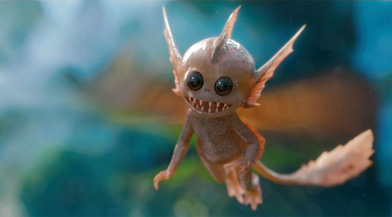The 400-Word Review: Oz the Great and Powerful
By Sean Collier
March 8, 2013
BoxOfficeProphets.com

After all, the broadway musical Wicked, adapted from the Gregory Maguire novel, is among the biggest stage hits of the past decade. The same could be said of The Wiz in the 1970s, also adapted for film. And let us not discount the numerous bizarre chidren’s films, animated and live-action, concerning Dorothy et al — 1985’s Return to Oz is probably the most infamous.
Add in countless other plays, books, TV pitches and pilots, songs, and films — many actually produced before the 1939 flick — and Oz, like near-contemporary series about Alice and Peter Pan, reveals itself as a constantly-churning cottage industry. Admittedly, Baum’s works usually end up in the wrong hands. Fortunately, that’s not the case here.
Oz the Great and Powerful draws on the source material but actually serves as a prequel to the whole story, following the wizard himself (James Franco, who succeeds in spite of his own towering persona) from Kansas to the Emerald City. Oz — or Oscar, as he’s known offstage — is a huckster carnival magician, a womanizer and a bit of a con; later events will prove quite thoroughly that he is only barely virtuous.
When Oz lands in techincolor (in homage, this one also starts out in black and white), he is yanked in to a three-witch power struggle; a dubious prophecy foretold his involvement, and he naturally keeps up the ruse of his own abilities.
The story is well-written and nicely compelling in the spirit of the original, with a new roster of colorful side characters to keep things moving. But the star of this Oz is director Raimi and his commendable visual effects team. Oz the Great and Powerful uses 3D technology better than any film since Avatar, employing brand-new tricks and smart editing to push the boundaries of the form; while 3D has often been unnecessary or even detrimental, Raimi uses it to add much and lose nothing.
And Oz itself — the territory, not the wizard — proves to be an irresistible playground for the director, who makes magic in nearly every scene. It’s not too often that a family flick is also a must-see; Oz is a welcome exception.
Sean Collier is the Associate Editor of Pittsburgh Magazine and a member of the Broadcast Film Critics Association. Read more from Sean at pittsburghmagazine.com/afterdark